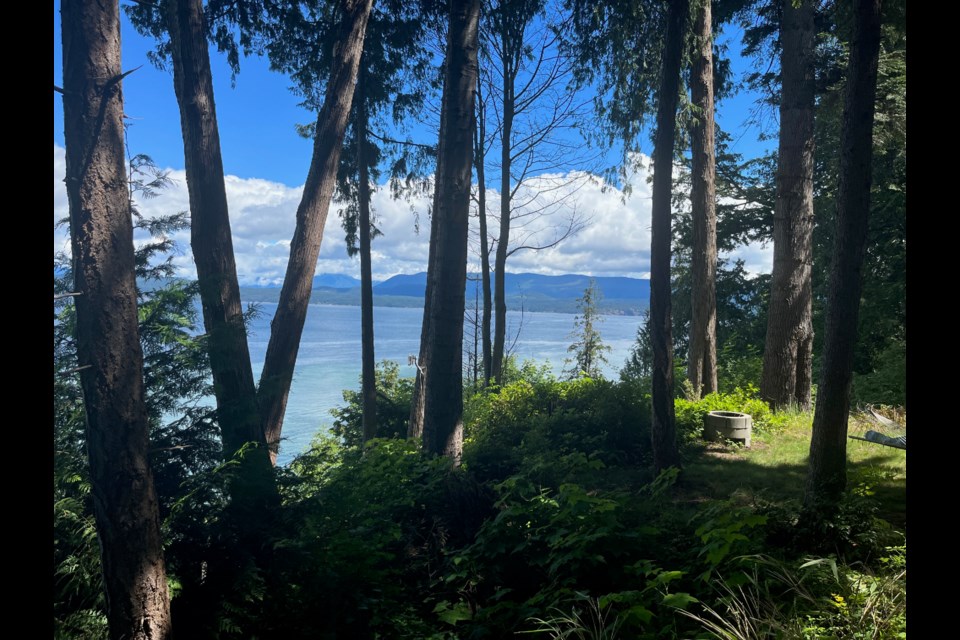Savary Island has been called Hawaii of the north, due to its long white sandy beaches and warmish waters that surround it.
But, the island is more than a sand dune; it's home to unique plants and animals and Douglas-fir ecosystems.
The northern Sunshine Coast off-grid island is also one the most subdivided islands in the Salish Sea, according to the Savary Island Land Trust (SILT).
SILT executive director Liz Webster said the group is on a mission to protect 50 per cent of Savary’s land. Now, with a recent land donation, the organization is one step closer to that goal.
"It started with a donor named Carmen Cadrin, who was willing to donate half the value of her lot," said Webster. "It's adjacent to a parcel that we already own."
The lot is located in a Douglas-fir forest on Vancouver Boulevard. The goal is to raise $135,000 for the land by Labour Day. So far, $105,000 has been raised and the last push is on for $30,000 more.
"The donor is a retired biologist from the [BC] Conservation Data Centre, and she came here over 20 years ago when we brought a whole bunch of scientists to document the sensitive ecosystems on Savary Island," said Webster. "She [Cadrin] fell in love with the island, and bought a [land] lot, but it never got developed."
Webster said Cadrin had a campsite set up on the site, but when her husband passed away, she decided she wanted to donate half the value of the land to SILT's Nature Legacy Fund.
Today, 43 per cent of the island is protected by the Nature Trust of BC, the province of BC and SILT.
"The legacy fund is the fund we use to raise money to acquire land," said Webster. "So a donation to that fund can only be used for land acquisition."
Save the Heart of Savary was the organization's first campaign, which took 22 years, and in 2018, 350 acres of the last undivided land on Savary Island was preserved. The area features what SILT deems the greatest remaining example of dunes within the rare coastal Douglas-fir biogeoclimatic zone (CDF) and one of the best examples of coastal sand dunes in Canada.
According to SILT's website, the area also is home to more than 250-year-old and mature second-growth forest, holds the largest groundwater recharge zone on Savary, more than 12,000 feet of waterfront and the only trail network on Savary.
"Being a charity, our focus is a public good; in this case, conserving nature and also educating people around nature," said Webster. "The density [on Savary] is so insane, absolutely beyond comprehension."
The island was subdivided into 50-foot lots in 1910, and has the highest density of subdivision in qathet Regional District, but no services, zoning, land use bylaws or enforcement, according to Webster. Folks visiting Savary can only get there by using the person-only water taxi, so one might be surprised to see so many vehicles and homes on the 7.5 kilometre long stretch of land.
"We have a large portion of the community that is opposed to any regulation," said Webster. "Everybody hates all the dust, all the traffic, and the continual building all over the island."
Webster said the only thing in her opinion that can be done to preserve what people love about the island, is to protect more of it.
"My answer again, which has been the same for 30 years, is more land conservation," said Webster. "If we want Savary Island to be sustainable, that's what we need to do."
She said most of the donations come from Savary Islanders.
"The Heart of Savary, that's owned by the Nature Trust of BC; we raised the money for them, and every penny came from Savary Island," said Webster.
Last year SILT was able to raise funds to save a native meadow within an at-risk Coastal Douglas-fir Ecosystem located on 1254 Tennyson Road on the island.
"We were able to raise the money in about three weeks," said Webster.
Join the Peak’s email list for the top headlines right in your inbox Monday to Friday.




